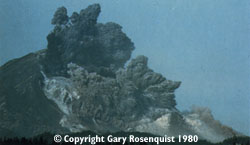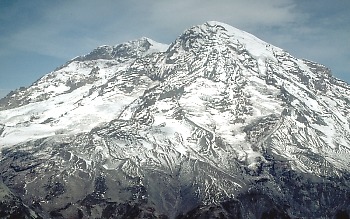 |
|
BackgroundMt. St. Helens: A valuable learning experiencePrior to the eruption of Mt. St. Helens in 1980, volcanologists were conservative in their estimates of the impact of lahars and pyroclastic surges. Dave Johnston, a USGS geologist working on St. Helens in 1980, observed a thin layer of ash on a high ridge more than 8 km away from St. Helens. He thought this was a pyroclastic deposit, and it turns out he was right. On May 18th, 1980, he was on this ridge when the volcano erupted (below), sending a huge pyroclastic surge travelling at more than 1000 km/h up the ridge, stripping the ridge down to bare bedrock and burning everything in its path.
Eruption of Mt. St. Helens, May 18 1980. Source After the eruption, lahars surged down the valleys north and west of the mountain, destroying houses, bridges, and other infrastructure.
Bridge destroyed by a lahar from These events taught disaster planners that they could no longer underestimate the effects of pyroclastic surges and lahars. Mt. Rainier: Large destructive potentialGeologists consider Mt. Rainier the most dangerous volcano in the Cascades. Its eruption history reflects an active volcano with a large potential for future eruptions. It has a huge mass of glaciers at the summit which could melt catastrophically in the event of an eruption. A large population lives in its watershed, and several cities in the area are built directly on previous volcanic deposits.
Mt. Rainier, the largest and most dangerous volcano in ObjectivesGiven the hazard potential from Mt. Rainier, I have identified three objectives for this project:
Next: Methodology >> |



